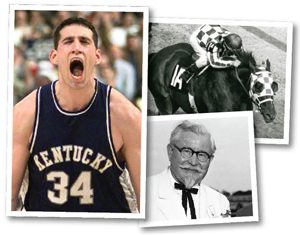September 16, 2025
Voter registration, 1952
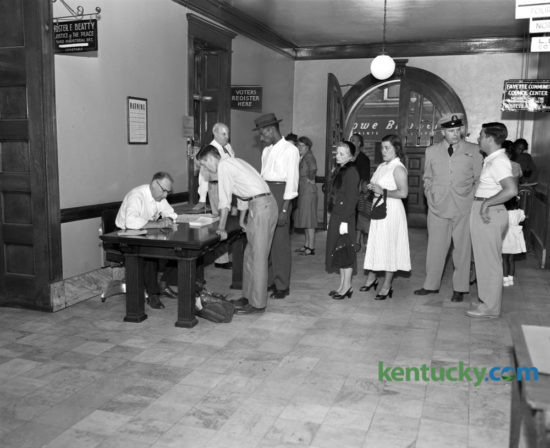
Because of the great number of Fayette County residents registering to vote in the November 1952 election, the county clerk’s office placed an extra desk in the hall outside the registration office on Sept. 5, 1952, to manage the overflow. A total of 578 residents registered that day. Of those, 339 were Democrats, 200 were Republicans and 39 were Independents. At left, deputy clerk Robert Ledford registered Bill DeRossitt while others waited in line in the courthouse hallway. The voter registration office was to close from Sept. 6 until after the election, which was Nov. 4 that year. The presidential election was between Gen. Dwight D. Eisenhower, a Republican, and Illinois Gov. Adlai Stevenson, a Democrat. Eisenhower was a landslide winner, carrying 39 states to Stevenson’s nine, including Kentucky. Herald-Leader Archive Photo
Community Chest campaign, 1947
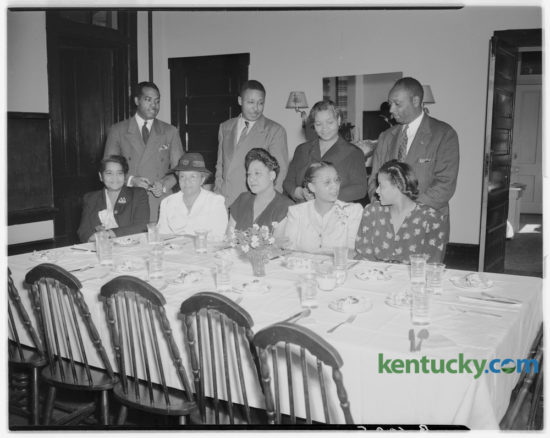
Section chairmen and team captains of the colored solicitation division of the Community Chest campaign met in late October 1947 at the Phyllis Wheatley YWCA to work out details of the 11-day drive. At the time, segregation extended to community organizations. First row, from left: Mrs. Lucy Hart Smith, chairman, special gifts committee; Mrs. Lydia Searcy, captain, Coletown; Ethel Taylor, co-chairman; Mrs. Shirley Hardy, captain, West End; Mrs. Lizzie Johnson, YWCA executive; standing, U.S. Fowler, division chairman; A.R. Howard, captain central district; Mrs. Elizabeth Moody, assistant captain, and Clifton Coleman, captain, South End. Published in the Lexington Herald-Leader on Oct. 26, 1947.
Transy students spend night in Rafinesque’s tomb, 1976
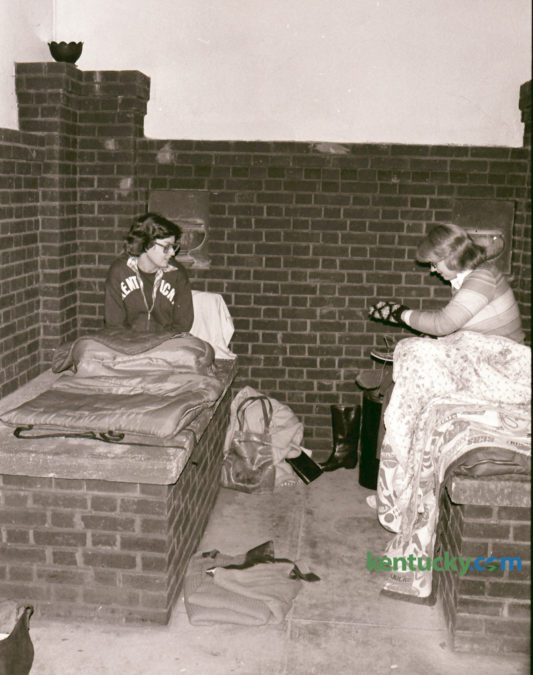
Transylvania University students Anna Gaye McMahon, 19, left, and Teresa Gibson, 19, spent the night in the tomb of Constantine Rafinesque in the basement of Old Morrison on Oct. 26, 1976. The eccentric professor taught at Transylvania during the early 19th century and was nationally known for his studies in botany. He was booted out of the school by Transy president Horace Holley in 1827. Tradition says Rafinesque placed a curse of the university that strikes every seven years. Transy students annually paid homage to Rafinesque with a convocation, torchlight parade and dance around Halloween. McMahon and Gibson decided the previous spring that it would be a wild, crazy thing to do. Gaye slept on Rafinesque’s crypt and Gibson slept atop the crypt of Sauveur F. Bonfils, another Transy professor, who has shared the tomb since 1939. Photo by John C. Wyatt | Staff
Teen day at Library Lounge, 1975
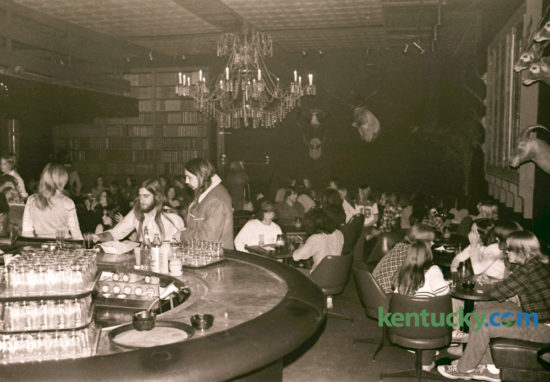
The Library Lounge in the University Plaza, a popular nightclub near the University of Kentucky, tried an experiment in February 1975 to allow teenagers in the club on Sundays. The alcohol was locked away, the cover charge was doubled to $2 and everyone older than 18 was kept out. Phil Block, the manager, hoped that the Sunday openings would help the club’s community image and that kids might roam less on Friday and Saturday nights to save their energy for Sunday. Photo by Chela Richardson | Staff
Kentucky-Missouri football, 1968
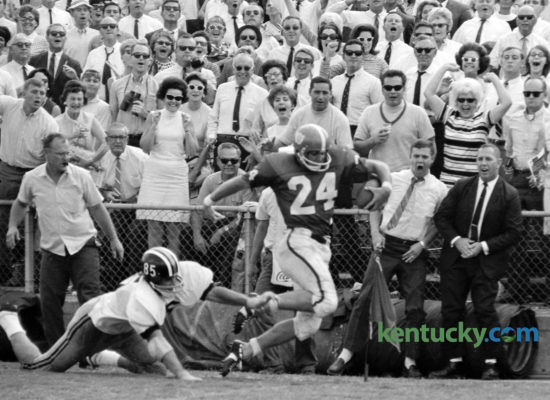
Kentucky’s Dicky Lyons crossed the goal line in front of Missouri’s Elmer Benhardt, scoring the winning touchdown on Sept. 21, 1968, as the Wildcats defeated the Tigers 12-6 in Lexington. A crowd of 34,000 sun-drenched fans witnessed the season-opening win at Stoll Field. However, UK would finish the year 3-7, ending with coach Charlie Bradshaw’s resignation. It would be 44 before the two teams met again, when Missouri joined the Southeastern Conference in 2012. UK and Mizzou played for the seventh time ever in 2016, with the Cats coming out on top. Photo by Frank Anderson | Staff
Swine flu clinic, 1976
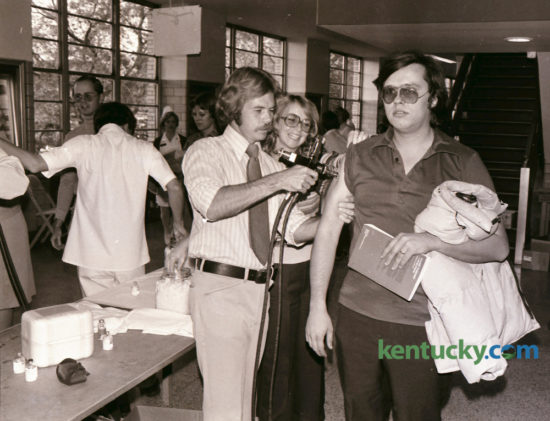
Donald Gross, right, a visiting assistant professor of political science at the University of Kentucky, stared straight ahead as he got his swine flu shot Oct. 28, 1976, at Memorial Coliseum from Paul Merkel, a state health department worker. Volunteer Judy Irvin, center, kept his sleeve up. This was the first of five local public clinics for swine flu shots. An estimated 5,000 people came to the coliseum the first night, and health department officials expected to inoculate about 125,000 people before the program ended. Photo by David Perry | Staff
Rex Chapman, 1985
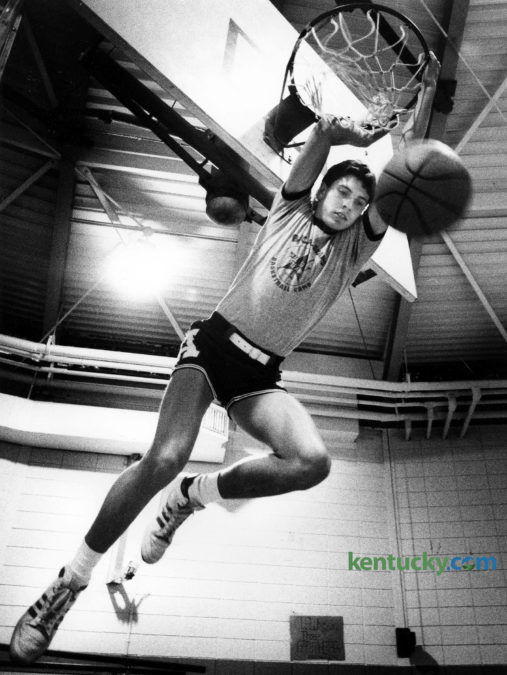
Apollo High School’s Rex Chapman, photographed Oct. 11, 1985, in Owensboro. Chapman was one of the most heavily recruited high school basketball players to ever come out of Kentucky. This photo ran with a story chronicling the hype and pressure surrounding his recruitment. He chose to play collegiately for Kentucky before declaring for the NBA Draft after only two seasons in Lexington. In 1988, he was drafted eighth overall by the Charlotte Hornets. He went on to play for four NBA teams in his 12-year professional career. Click here to see a photo from our archives of Chapman’s game against rival Louisville in his freshman year at UK. The Kentucky basketball radio pregame show will open the season with a new lineup in 2016-17 that features Chapman as co-host. Photo by Charles Bertram | Staff
Continental Inn room, 2002
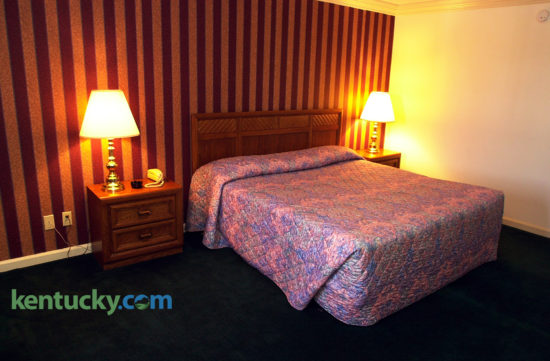
A typical room at the Continental Inn on New Circle Road in Lexington, taken April 25, 2002. Built for $2 million in 1965 at what was then the edge of Lexington proper and lined with wrought-iron Mediterranean style, the Continental Inn was always a bit over the top, hosting Elvis conventions, psychic fairs and square-dancing conventions. The Rotary Club met there for years, too, and in 1976, then-California Gov. Ronald Reagan presented the group’s high school academic awards to Lexington students. After 40 years of business, the iconic 319-room hotel closed in 2005. Recently, the storied motel’s final piece, a conference center area, was demolished. To see a photo from our archives of the hotel’s indoor pool, click here. Photo by Charles Bertram
Lafayette wins Boys’ Sweet Sixteen, 1979
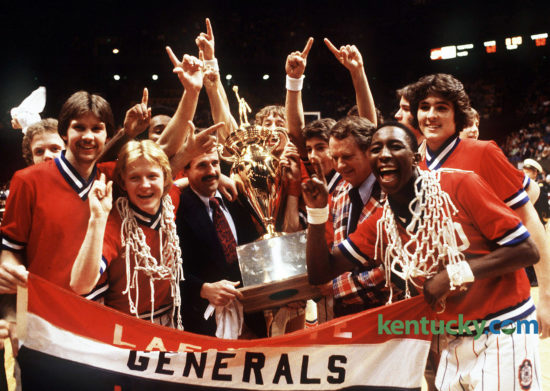
The Lafayette Generals basketball team celebrated after winning the Boys’ Sweet Sixteen championship on March 17, 1979, in Rupp Arena. Dirk Minniefield, who was named Mr. Basketball that year, is front right with the net around his neck. Assistant coach Donnie Harville and head coach Charles “Jock” Sutherland, right, held the trophy. On Sunday, Sutherland was named to the Kentucky High School Athletic Association 2017 Hall of Fame class, along with 10 others. Photo by Ron Garrison | Staff
Downtown Lexington railroads, 1956
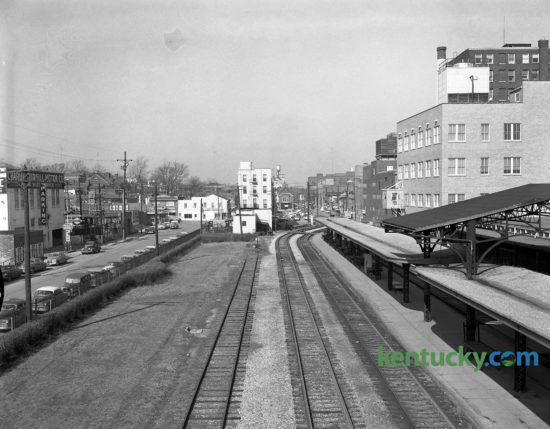
This view looks west down Lexington’s Union Station railroad yards in winter 1956. The photo was taken from atop the Harrison Street (now Martin Luther King Boulevard) viaduct. Union Station opened in 1907, and the last train left the station in 1957, and the station was torn down in 1960. The last passenger train at the Southern Railway station pulled out in 1970. The last L&N train left shortly after. The city’s last passenger train, the Chesapeake & Ohio’s George Washington, left Lexington on May 1, 1971. The tracks were removed shortly after, and Vine Street, which can be seen on the left side of the photo, was widened in their place. Click here to see more images of Union Station from our archives.

